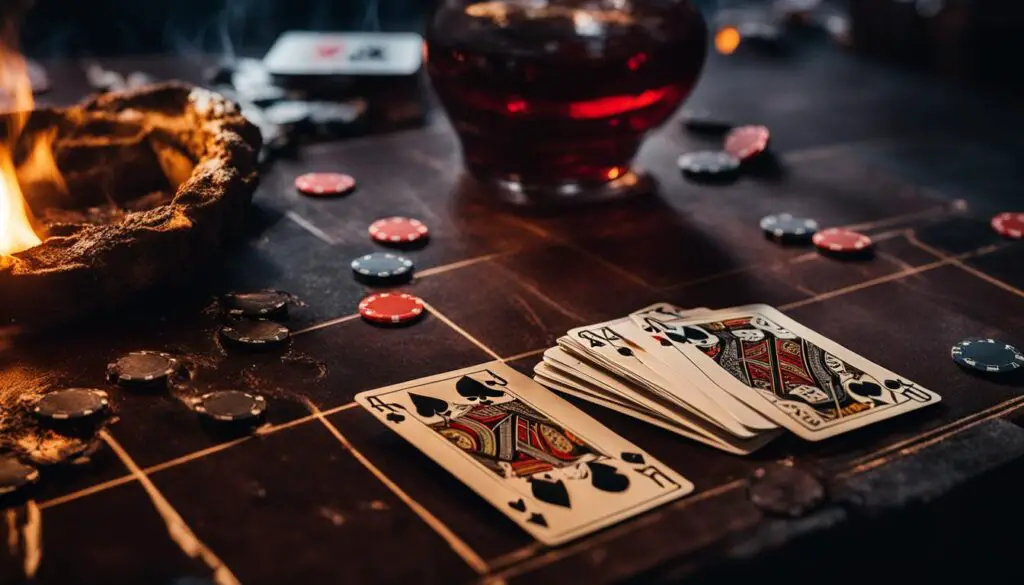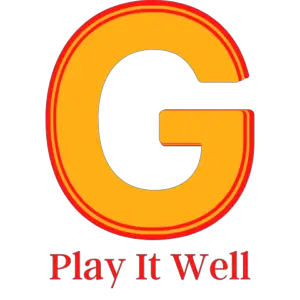Burning cards in poker is a fascinating practice that adds an air of intrigue to the game. Have you ever wondered why it’s done? In this article, we’ll delve into the purpose and significance of burning cards in poker, shedding light on this mysterious aspect of gameplay.
Key Takeaways:
- Card burning in poker is done to prevent cheating and ensure fairness.
- It adds suspense and unpredictability, making the game more exciting for players.
- Cards are burned before the flop, turn, and river.
- Exposed cards can lead to reshuffling or become the burn card.
- Some players strategically use card burning tactics to gain an advantage.
The Purpose of Burning Cards
The primary purpose of burning cards in poker is to ensure fairness and prevent cheating during gameplay. By discarding and replacing cards, the dealer eliminates any potential advantage or disadvantage that players may have by knowing the upcoming cards. This practice adds an element of suspense and unpredictability to the game, making it more exciting for all participants.
Additionally, the act of burning cards serves as a protective measure against marked or tampered cards. By discarding a card face down, the dealer ensures that no player has access to any information that could compromise the integrity of the game. This maintains a level playing field and reinforces the trust between players and the dealer.
The significance of burning cards in poker cannot be understated. It not only promotes fair gameplay but also contributes to the overall enjoyment and challenge of the game. With each burn of a card, the possibilities of what may come next increase, heightening the strategic thinking and decision-making skills required to succeed in poker.
https://www.youtube.com/watch?v=_j93s2vVVhk
Summary:
- Burning cards prevents cheating and ensures fairness in poker.
- It adds an element of suspense and unpredictability to the game.
- Burning cards protects against marked or tampered cards.
- It enhances the challenge and strategic nature of the game.
When and How Cards Are Burned
In a game of poker, the act of burning cards serves a crucial role in maintaining fairness and preventing cheating. But when exactly are cards burned, and how does this practice affect the game?
Typically, a card is burned at specific points in the game: before the flop, before the turn, and before the river. The dealer takes the top card from the deck and discards it face down, never revealing it to the players. This ensures that the upcoming community cards remain unknown until they are revealed during the game.
The purpose of burning cards is twofold: to prevent any player from gaining an unfair advantage by knowing the upcoming cards and to add an element of suspense and unpredictability to the game. By discarding and replacing cards, the dealer eliminates the possibility of anyone having knowledge of the next cards, ensuring that the game remains fair and exciting for all players.
So, why is it important to understand the significance of burning cards in poker? By knowing when and how cards are burned, players can have a better grasp of the game’s dynamics and strategize accordingly. It’s a key aspect of the poker experience that adds an extra layer of excitement and uncertainty to each hand.

How does burning cards affect the game?
Burning cards affects the game in multiple ways. Firstly, it ensures that no player has an unfair advantage by knowing the upcoming cards, as mentioned earlier. This creates a level playing field and forces players to rely on their skills and strategies rather than having access to privileged information.
Secondly, the act of burning cards adds an air of mystery and excitement to the game. It keeps players on their toes, never quite knowing what cards are about to be revealed. This suspenseful element enhances the overall experience and makes poker even more enticing.
Overall, burning cards is an integral part of the poker tradition. It maintains fairness, adds excitement, and keeps the game unpredictable. Understanding the significance of card burning not only enhances your knowledge of poker but also allows you to fully immerse yourself in the thrill of the game.
Dealing with Exposed Cards
During a poker game, it is not uncommon for a card to be accidentally or intentionally exposed. When this happens, specific rules and procedures must be followed to ensure fairness and maintain the integrity of the game.
If the first or second card is exposed during the initial deal, it is considered a misdeal, and all the cards are reshuffled. This is done to prevent any player from gaining an unfair advantage by having knowledge of a card that should have remained hidden.
However, if a card is accidentally exposed after the initial deal, it is shown to all players at the table and used as the burn card for that round. This means that the exposed card is discarded and replaced with the next card from the deck, ensuring that the upcoming community cards remain unknown until they are revealed during the game.
Handling Multiple Exposed Cards
In the event that multiple cards are exposed or if a burn card is discovered during the course of a hand, the specific rules of the game and the discretion of the dealer come into play. The dealer may decide to continue the hand, replace all the exposed cards, or even declare it a misdeal depending on the severity of the situation.
It’s important for players to understand the rules and procedures for dealing with exposed cards to avoid any confusion or disputes during gameplay. By adhering to these guidelines, the game remains fair, and all players have an equal chance of success.
Strategies and Tactics Involving Card Burning
When it comes to poker, burning cards is not just a procedural aspect of the game but can also be used as a strategic tool. Experienced players often employ various tactics involving card burning to gain an advantage or manipulate their opponents.
One strategy is to expose a card intentionally during the deal to provoke a specific reaction from an opponent. By revealing a card, players can gauge their opponents’ reactions and potentially gain insight into the strength of their hands. This tactic can be particularly useful in mind games and psychological warfare at the poker table.
Another tactic involves not burning a card when it is their turn to do so. This gives players a “second chance” at receiving a better card, potentially improving their hand and increasing their chances of winning the pot. However, this strategy can be risky as it requires players to rely on luck rather than skill and may not always yield favorable outcomes.
It’s important to note that these tactics, also known as angle shooting, can be controversial within the poker community. While some players may view them as clever and strategic, others consider them unsportsmanlike and unethical. The acceptance of these tactics often depends on the specific rules and guidelines set by the poker room or tournament organizers.
Poker Rules for Showdown and Card Disclosure
In a game of poker, the moment of truth arrives at the showdown, where players reveal their hands to determine the winner. Understanding the rules for showing cards is essential to navigate this crucial phase of the game and maximize your chances of success.
During a showdown, the winner is required to show their hand to claim the pot. However, it’s important to note that both hole cards must be presented to be eligible for victory. If you decide to fold your hand, you are not required to reveal your cards. However, if you choose to show one card, both hole cards must be displayed to all players at the table. This ensures transparency and fairness in the game.
One intriguing situation arises during an all-in scenario when one or more hole cards are inadvertently exposed. The rules for card disclosure in this case may vary depending on whether all players involved are all-in or if only one player reveals their cards. The specific rules for an all-in situation can differ depending on the type of game, whether it’s a cash game or a tournament.
Understanding the intricacies of card disclosure during a showdown is crucial in poker. Familiarize yourself with these rules and ensure you are well-prepared for this critical phase of the game. By doing so, you’ll be able to navigate the showdown with confidence and potentially secure the pot.
Conclusion and Final Thoughts
After exploring the practice of burning cards in poker, it becomes clear that this tradition serves significant purposes within the game. By discarding and replacing cards at specific points, poker dealers ensure fairness and prevent cheating, creating a level playing field for all participants. Additionally, the element of suspense and unpredictability introduced by card burning adds excitement and strategy to the gameplay.
While occasional card exposure may occur during a hand, the rules and procedures in place effectively handle these situations, maintaining the integrity of the game. Familiarizing oneself with these rules is crucial for all poker players to fully understand the impact of card burning on the gameplay experience.
So, the next time you witness cards being burned in a poker game, you will have a deeper appreciation of the reasons behind this practice. Remember, burning cards is not just a mysterious ritual—it is a crucial aspect of poker that contributes to fairness, excitement, and the strategic nature of the game.
FAQ
Why do you burn cards in poker?
Burning cards in poker is done to prevent cheating and ensure fairness in the game. It also adds an element of suspense and unpredictability to the gameplay.
What is the purpose of burning cards in poker?
The primary purpose of burning cards is to ensure that no one has knowledge of the upcoming cards, eliminating any potential advantage or disadvantage for the players.
When and how are cards burned in poker?
Cards are typically burned before the flop, turn, and river. The dealer takes the top card from the deck and discards it face down, never revealing it to the players.
What happens if a card is exposed during the deal?
If the first or second card is exposed during the deal, it is considered a misdeal, and the cards are reshuffled to maintain fairness.
Are there any strategies or tactics involving card burning?
Some players may strategically use card burning to gain an advantage or manipulate their opponents, such as exposing a card to provoke a specific reaction.
What are the rules for showing cards during a showdown?
During a showdown, the winner is required to show their hand, but both hole cards must be presented to win the pot. Folding your hand does not require revealing your cards.
What happens if during an all-in situation, one or more hole cards are exposed?
The rules may vary depending on whether all players are all-in or if only one player reveals their cards, and the specific rules of the game and the discretion of the dealer determine the appropriate actions to be taken.
